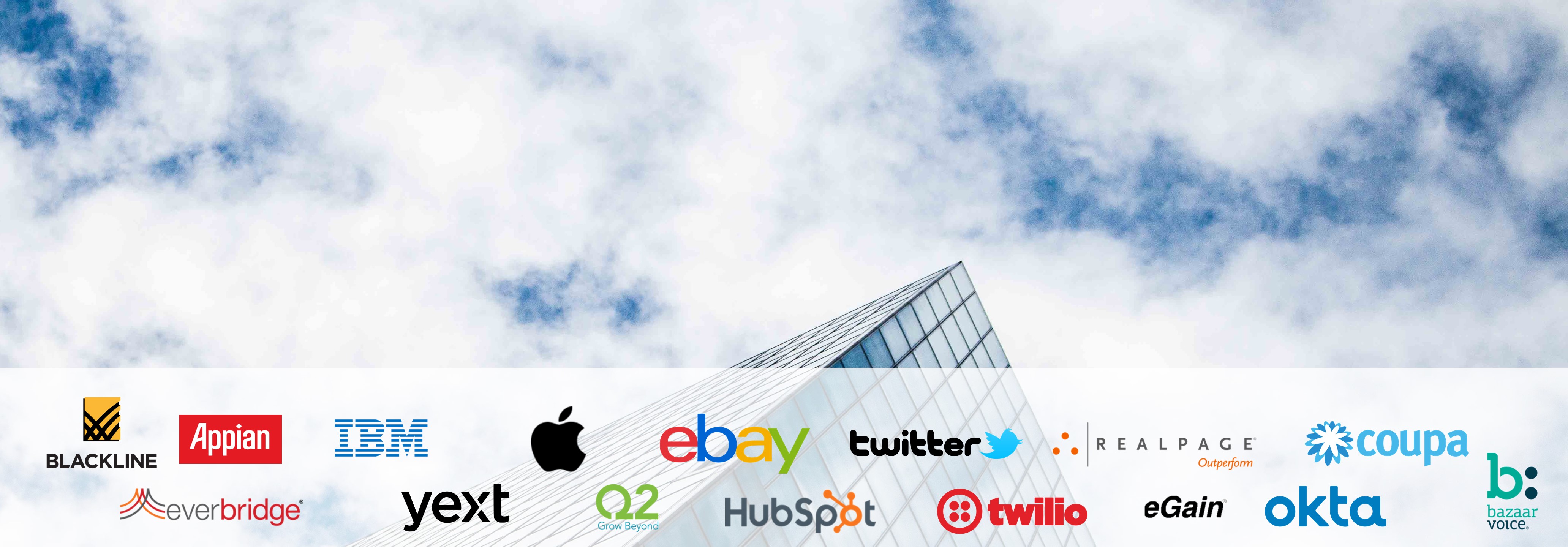SaaS Cloud Software Update – December 2017
Navidar | January 17, 2018
Public Markets and M&A Activity
The Navidar SaaS Software Cloud Index advanced an impressive 29% for the full-year 2017 and was flat in December, roughly in line with the NASDAQ. Following is a summary of the company-specific issues related to selected stocks in our coverage universe that meaningfully out- or under-performed as well as relevant M&A activity and Navidar events.
IBM (NYSE: IBM -0.4% in December), RealPage (NASDAQ: RP -2.3%), and Bazaarvoice (NASDAQ: BV +0.0%) – along with 10 privately-held companies participated in Navidar’s ARTIFICIAL INTELLIGENCE IN AUSTIN conference in December. The well-attended event featured a keynote presentation by IBM Watson’s Chief Technology officer as well as panel discussions and an overview of AI. Visit Navidar.com for a summary report and stay tuned for announcements about upcoming events that we are hosting in 2018.
HubSpot (NYSE: HUBS +9.2% in December) – the SaaS marketing and sales provider’s stock was able to overcome a negative short report that called out operational issues such as pricing power, partnerships, and cross-selling. After investigating the matters more closely, many investors viewed these concerns as overblown and came away more enthusiastic about HUBS’s story, driving the stock up. While the addition of a freemium approach has certainly pressured HUBS’s average selling price, it serves to lower customer acquisition cost as the company has been successfully up and cross-selling clients. We also like that HUBS has successfully adopted a multi-product strategy, expanding to salesforce automation from its flagship marketing automation.
Q2 eBanking (NYSE: QTWO -11.9%) – the SaaS digital banking provider’s stock declined due to investor concerns about growth and valuation. Due primarily to the law of large numbers, growth has naturally slowed—38% in 2016, ~29% in 2017E, and 23-25% in 2018E. Also, valuation has since come down a bit after December’s pullback as 2018E EV/revenue is currently 5.0x, versus the group median of 4.5x. Also, we like that QTWO has a history of operational excellence and has been moving upstream to larger banks and credit unions. The company now has about 30 customers with over $10 billion in assets, up from just one when it went public in March 2014.
Blackline (NASDAQ: BL -10.6%) – the SaaS accounting/finance automation providers’ stock remained under pressure after reporting disappointing 3Q17 results in November. The adoption of ASC 606 (new revenue recognition rules for customer contracts) could be distracting accounting departments from focusing on their BL buying decision, in our opinion, contributing to a slowdown in selling activity. Guidance calls for billings growth to decelerate to 22% YOY in 4Q17 from 54% in 1Q17. That said, we continue to like that BL’s solutions optimize its 2,100 customers’ accounting/finance operations, including the financial close process, account reconciliation, and intercompany accounting.
Twitter (NYSE: TWTR +16.7%) – following a year of revenue declines, the social media provider is poised to return to growth and plans to produce a profit in 4Q17. We like recent improvements in video/live streaming and double-digit daily average user growth. Also, retweets and “tweet likes” are occurring at twice the rate since TWTR increased character limit to 280 from 140. This has also resulted in more followers and more time spent on the social media platform.
Yext (NYSE: YEXT -15.9%) – after spiking 25% in November, the Internet knowledge listing provider’s stock came under pressure again in December as investors digest its less-than-stellar guidance—the stock has been quite volatile since its April 2017 IPO. There are concerns about upside potential for gross margin because in 3Q17 it stood at 74.7%, which is already near YEXT’s long-term target of 75-80%. Also, investors are concerned about YP’s merger with Dex Media, which will reduce YEXT’s 2018 revenue growth by about one percentage point. Still, we like the company’s 30%-plus growth and ability to connect 100s of third-party maps, apps, search engines, intelligent GPS systems, digital assistants, vertical directories, and social networks.
Okta (NASDAQ: OKTA -12.3%) – the SaaS Identity management provider’s stock decline was due primarily to competitive concerns. Amazon AWS introduced a service that makes it easy to manage single sign-on (SSO) to multiple accounts and applications, building on its IAM (internal identity and access management capabilities) and Cognito (mobile experience) functionality. AWS joins other IaaS leaders, such as Microsoft and Google, that also have this feature. While competitive with OKTA ‘s SSO offering, the company continues to be differentiated by its 5,000 partner integrations and IaaS/platform independence.
Everbridge (NASDAQ: EVBG +12.2%) – the SaaS critical event response provider added a large state customer, Vermont for $540,000 over four years, driving the stock higher. This represents its fifth statewide contract won, joining the likes of Connecticut, Florida, and New York. We like that state and local officials are able to use EVBG to notify the public during emergency situations, like roadway interruptions and severe weather.
Appian (NASDAQ: APPN +43.0%) – the low-code and business process management platform-as-a-service (PaaS) provider, which went public in May 2017, announced a new major customer, language-and-content-translator SDL. The company is using APPN to automate and digitize its core language services business. We like that more than 300 customers use APPN to enable subject-matter experts with limited programming skills to directly participate in the application development process. APPN is projected to generate $234M of revenue in 2019E with subscription growth of 20%.
Download Full Article Below


